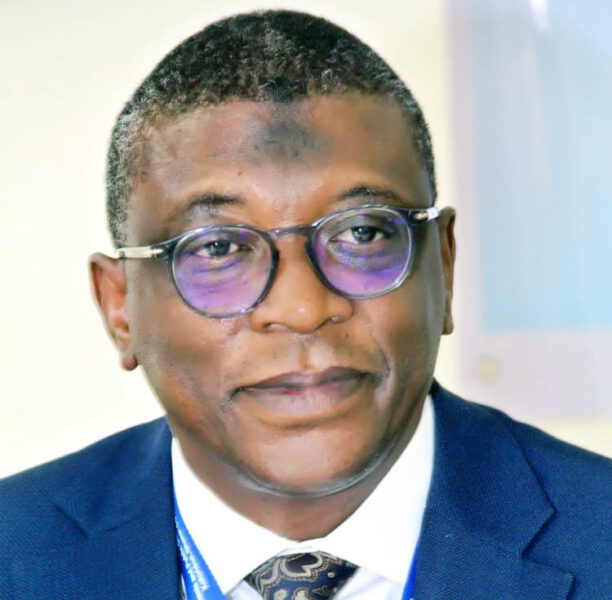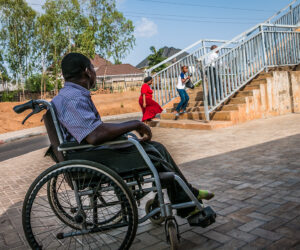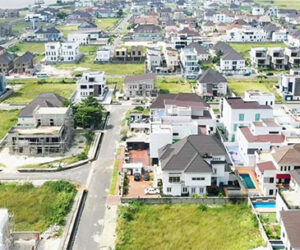1
As we move further into 2025, Nigeria’s economic story is one of resilience, renewal, and strategic recalibration.
Globally, economies are grappling with slowing growth, projected at 2.7% in 2025 by the IMF for advanced economies, and heightened geopolitical risks that affect trade and investment.
Against this backdrop, Nigeria has demonstrated remarkable determination.
Domestically, inflationary pressures, infrastructure deficits, and unemployment persist, yet they now represent policy frontiers rather than defining constraints.
Recent policy measures, ranging from fiscal consolidation to targeted monetary adjustments, have laid the groundwork for a sustainable growth trajectory.
The real test, however, lies not only in achieving stability but in ensuring that it translates into tangible socio-economic outcomes: decent jobs, rising incomes, improved productivity, and broader social welfare.
If Nigeria deepens reforms, invests strategically in human capital, and leverages its structural advantages, the country can achieve not only recovery but inclusive and durable economic transformation.
Positive Developments in the Nigerian Economy
1.Economic Growth and Stability
Nigeria’s economic trajectory is increasingly encouraging.
The International Monetary Fund (IMF) projects real GDP growth of 3.9% in 2025, up from 3.5% in 2024, with further acceleration to 4.2% in 2026. This growth is underpinned by:
• Stronger oil production following operational improvements and policy reforms in the petroleum sector.
• Recovery in services, particularly telecommunications, financial services, and transport, reflecting resilient domestic demand.
• Improved agricultural output, thanks to favorable weather patterns and government support for mechanization and inputs.
The recent GDP rebasing has also given a more accurate reflection of the economy, capturing growth in high-potential sectors such as digital services, modular refining, and the creative industries. This expanded view highlights opportunities for job creation, innovation, and revenue generation that were previously underappreciated.
Inflation Moderation and Monetary Policy Realignment
Inflation remains elevated but is gradually moderating.
Headline inflation declined to 18.02% in September 2025, down from 20.12% in August, reflecting improved food supply, seasonal harvests, and targeted interventions in the energy market.
The Central Bank of Nigeria’s interest rate cut, the first since 2020, signals a nuanced policy shift: a deliberate effort to balance price stability with growth and employment objectives.
This approach is consistent with modern macroeconomic management, where inflation targeting is tempered by the need to stimulate investment and production in key sectors.
Fiscal Discipline and Debt Management
The Federal Government’s approval of the Medium-Term Debt Management Strategy (MTDS) 2024–2027 reflects a professional recognition that sustainable growth requires fiscal prudence alongside strategic borrowing.
Key objectives include:
• Extending average debt maturity to at least 10 years, reducing refinancing risk and interest rate volatility.
• Reducing foreign-exchange-denominated debt to 45%, mitigating vulnerability to exchange rate shocks.
From an economist’s perspective, the MTDS positions Nigeria to borrow for growth, not consumption, ensuring that public investment projects generate returns exceeding debt servicing costs. This is a critical step toward fiscal sustainability and investor confidence.
Foreign Investment and Energy Sector Confidence
Investor sentiment is improving, illustrated by Shell’s approval of the HI Offshore Gas Project, expected to supply 350 million standard cubic feet of gas per day to Nigeria LNG.
Economically, such projects deliver multiplier effects: they stimulate domestic suppliers, create high-skill and semi-skilled jobs, and strengthen Nigeria’s position as a reliable energy hub in Africa. They also enhance balance of payments stability, by promoting export-oriented production.
Strategic Priorities for Sustained Economic Improvement
Expanding Infrastructure and Power Supply
The reduction of electricity subsidies by 35% and adoption of a targeted tariff structure have freed fiscal resources.
However, long-term industrial growth requires strategic investment in energy generation, transmission, and distribution, as well as transport, logistics, and digital infrastructure. Economically, infrastructure is not just a cost, it is a productivity multiplier. Reliable power and transport reduce production costs, attract investment, and enable firms to scale.
Deepening Economic Diversification
Dependence on oil exposes the economy to global price volatility. True resilience demands diversification into labour-intensive, exportable, and technologically dynamic sectors. Accelerating reforms in agriculture, manufacturing, mining, and technology is crucial.
Agro-processing, renewable energy, and ICT not only generate jobs but also expand Nigeria’s value-added capacity, a critical determinant of long-term growth.
Social Protection and Human Development
Growth without inclusion is unsustainable. Expanding social safety nets, skills development, and youth employment programs ensures that reform gains are widely shared.
Investments in conditional cash transfers, digital skills programs, and microfinance access are not mere social measures, they are strategic economic interventions that increase productivity, stabilise consumption, and reduce social unrest.
Strengthening Governance and Institutional Capacity
Policy consistency and institutional efficiency are non-negotiable for lasting economic progress. Strengthening transparent institutions, digital government processes, and public procurement systems reduces leakages, encourages private investment, and enhances policy credibility. From an economist’s standpoint, strong institutions are a precondition for structural transformation.
Key Drivers of Growth
Stronger Growth Projections
• IMF forecasts of 3.9% (2025) and 4.2% (2026) reflect recovery momentum, supported by better data and emerging sectors.
Supportive Macroeconomic Fundamentals
• Exchange rate stabilization, rising external reserves, and improved FX transparency bolster investor confidence and economic predictability.
Coordinated Fiscal and Monetary Policies
• Combining targeted fiscal consolidation with accommodative monetary policy reinforces confidence in the real sector and promotes investment.
Structural Challenges and Risks
Several vulnerabilities require attention:
• High food and energy inflation continues to erode real incomes.
• Growth has yet to fully translate into employment and improved living standards.
• Oil dependence exposes the economy to global shocks.
• Infrastructure deficits, governance inefficiencies, and security concerns constrain productivity.
• Climate and agricultural risks, compounded by rural insecurity, threaten food security and economic stability.
Transforming Reforms into Employment Gains
To convert reform momentum into broad-based job creation, Nigeria should:
Link Reforms to Labour-Intensive Sectors
•Prioritise agro-processing, housing, renewable energy, and light manufacturing, which generate substantial employment per investment unit.
• Expand local content requirements in energy and infrastructure projects to maximize domestic employment.
Accelerate Skills Development
• Launch a National Skills Acceleration Framework, connecting TVET institutions, private firms, and state governments.
• Promote partnerships with fintech and tech hubs, preparing youth for digital and AI-driven opportunities.
Unlock MSME Financing and Entrepreneurship
• Channel gains from fiscal reforms and exchange rate stabilization into credit guarantees, concessional loans, and innovation grants for small businesses.
• Simplify business registration, secure property rights, and ensure stable power supply to unleash Nigeria’s entrepreneurial potential.
By implementing these measures, the economy can translate reform gains into employment, income, and social cohesion, creating a virtuous cycle of growth and inclusion.
Conclusion
Nigeria in 2025 is at a critical inflection point, cautiously optimistic yet structurally fragile. Gains in growth, inflation moderation, and investment confidence mark important progress, but the work is far from complete.
To sustain the recovery, Nigeria must maintain macroeconomic stability, deepen structural reforms, and ensure that growth translates into tangible improvements for citizens. Achieving this requires collaboration among government, private sector, civil society, and development partners.
By committing to policy consistency, human capital investment, and inclusive growth, Nigeria can consolidate its recovery and emerge as a more competitive, resilient, and equitable economy in the years ahead.
• Dr. Baba Y. Musa, is President, Nigerian Economic Society, and Director General, the West African Institute for Financial and Economic Management (WAIFEM)








